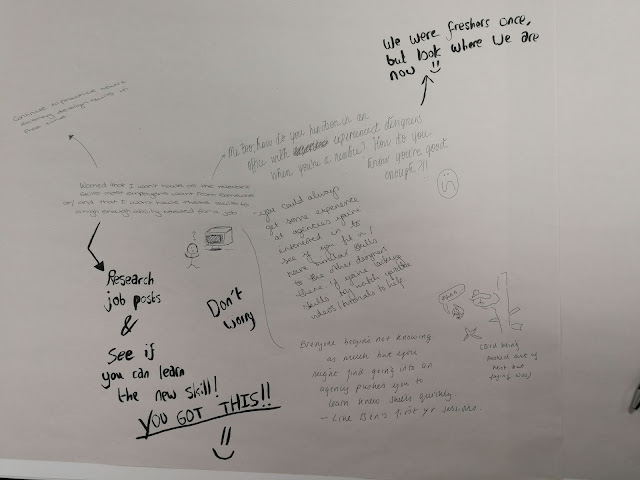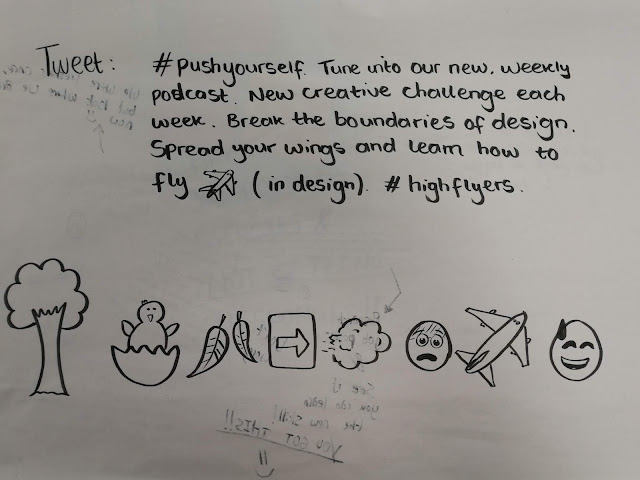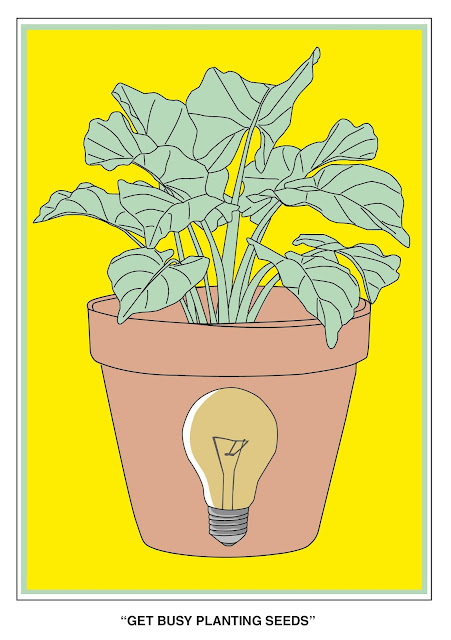6B2 - Undertake research to identify and evaluate their personal and professional skills and the career or progression opportunities available to them.
Protest Press are a collective running hands-on workshops using creative methods to engage conversation, evoke positive change, and inspire powerful activism. The workshop aimed to get us thinking about different issues of protest which we felt passionate about, and to produce a collaborative, typographic poster using off-cuts of paper based on this.
In order to get us thinking, we started the workshop with a word association task, writing a statement then passing it on for someone else to respond and continue this way responding only to the statement above until the paper was filled. Issues which came up included sustainability, climate change, sexual consent, politics and student welfare.
In the design of our poster, we decided to focus on the juxtaposition between the two meanings of the statement 'I'm ok' by folding the paper in half and on one side placing the words 'I'm ok', but on the other side placing the word 'not' as a continuation of the statement. The type style we created used outlines made from off-cuts of paper in order to create more of an impact.
Placing the poster out of the studio, we experimented with folding the poster around corners and various shapes so that from a certain position only one side is visible, but when walking back in the opposite direction, the other side is then also visible.
We felt this worked better when situated on the corner of a wall. The poster was then kept up on the corner of the notice board in the university's cafeteria since it was thought that here it would grasp a large amount of attention and get our message across more effectively to a mass amount of people who fit our target audience of students. At the bottom of the poster we also added the email address of student welfare in suggesting that it is okay not to be okay and that there are people here who are willing to listen to your problems and help you get the appropriate support if and when needed.
Experience:
Protest Press take a hands-on approach to these workshops, working with raw materials to produce original posters which aim to engage the public with important issues of protest. They believed that this hands-on approach meant that the posters seem more personal and allows for an experience which gets people to engage more with not only the message, but also the process.



























































